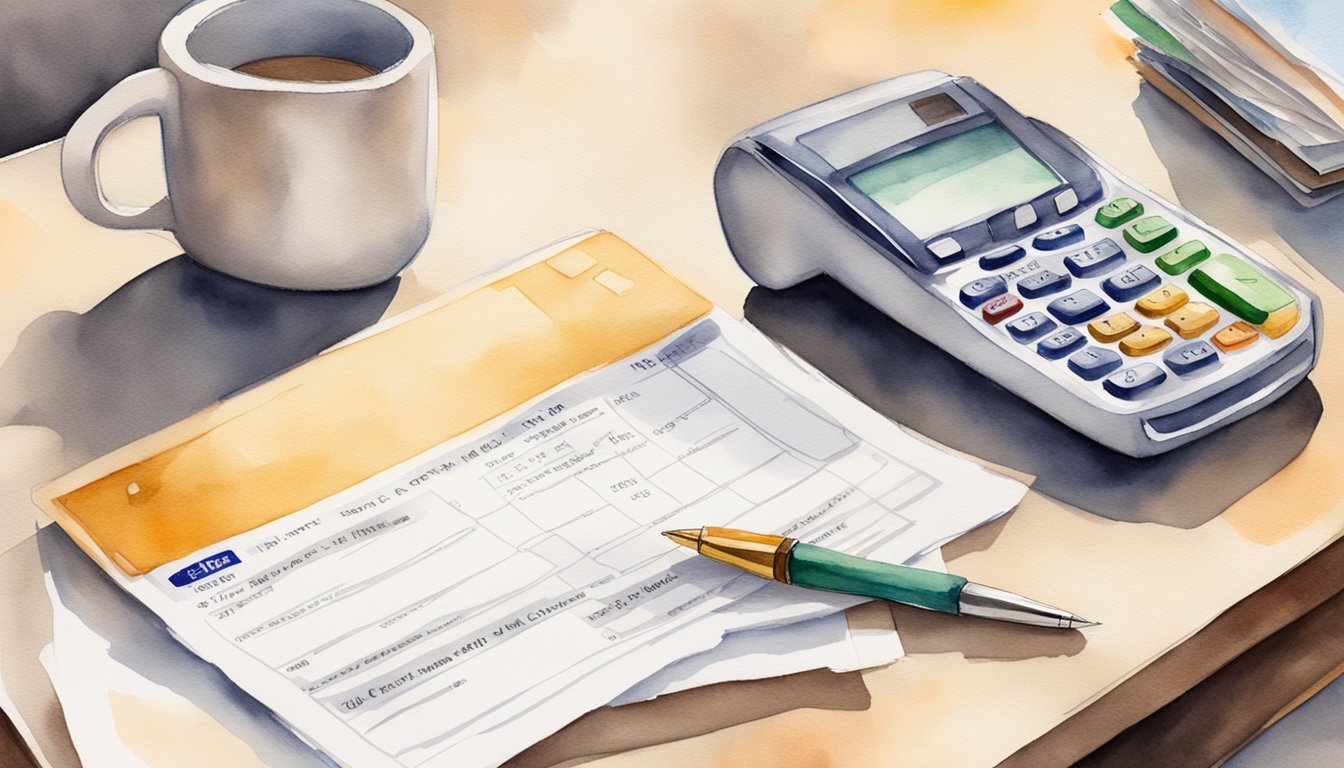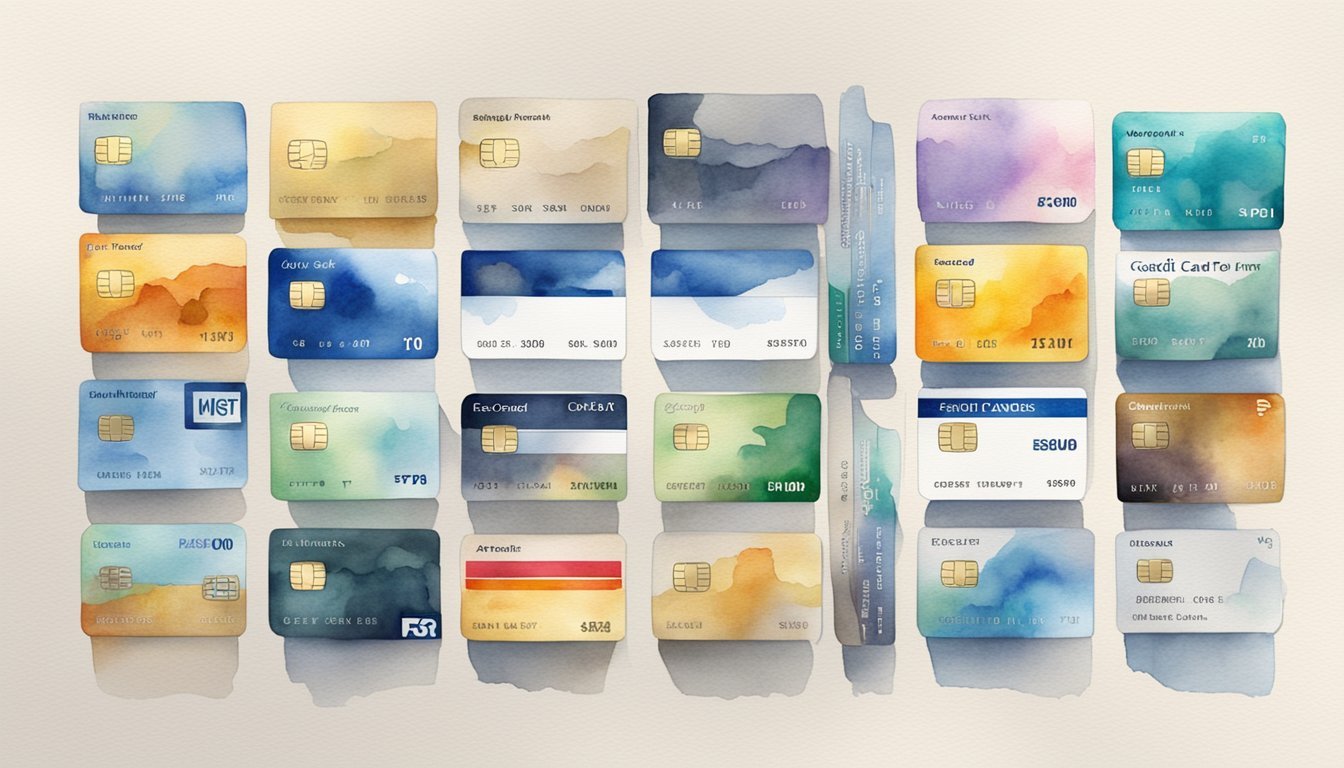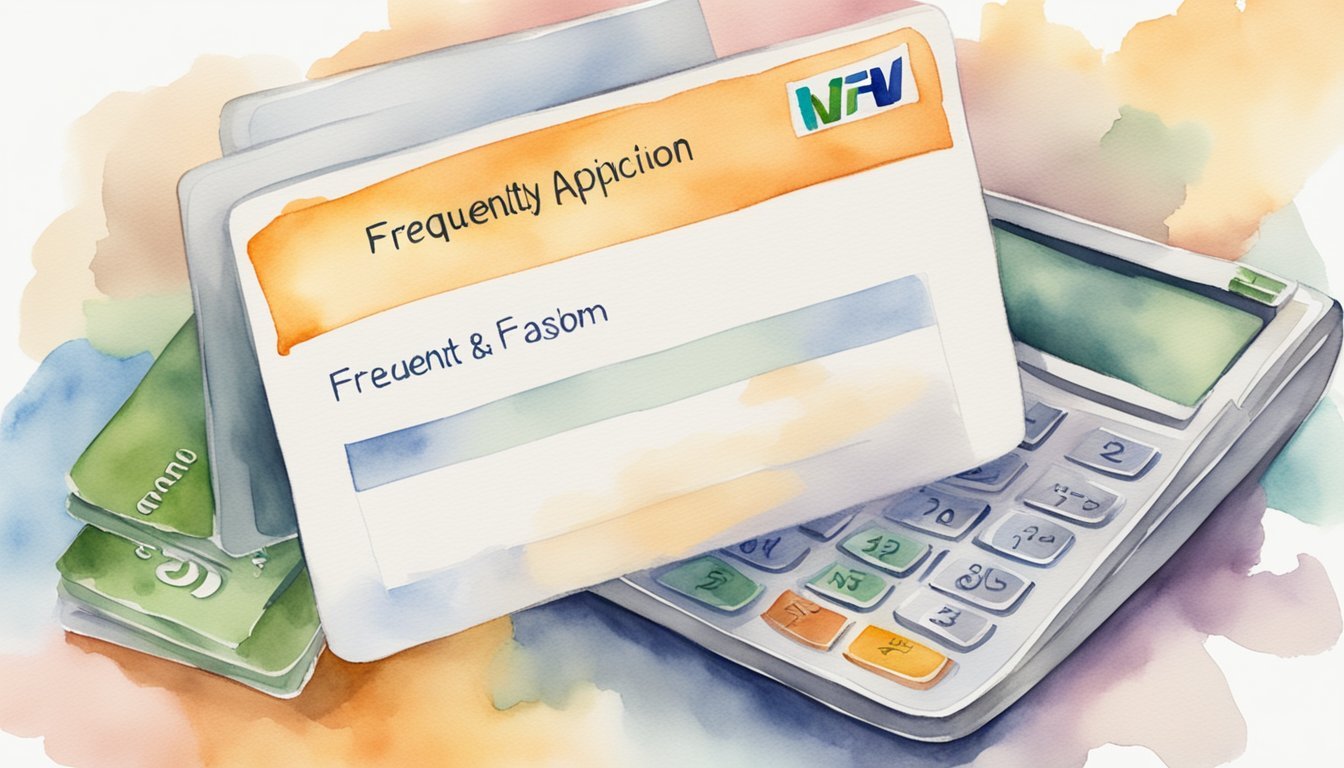10 Things To Know Before You Apply for a Credit Card: Your Quick Guide

Applying for your first credit card is a big step.
It can be both exciting and a little confusing.
There are a lot of details to consider, and making the right choice can help you build a strong financial foundation.

Knowing what to look for can save you time, money, and stress.
With the right knowledge, you can avoid common pitfalls and make choices that benefit your financial health.
Understanding the basics before you dive in will set you up for success.
1) Check Your Credit Score
Before applying for a credit card, the first step is to check your credit score.
Your credit score is a key factor that lenders use to decide if they will approve your application.
You can check your credit score with various financial services.
Many websites offer free credit score checks.
It’s a quick and easy process that can give you valuable insights.
Knowing your score helps you understand your creditworthiness.
It also gives you a chance to address any issues that might lower your score.
For instance, you can correct errors on your credit report or pay down debts.
A good credit score can unlock better credit card offers with lower interest rates.
Conversely, a lower score might limit your options.
Knowing where you stand allows you to apply for cards that match your credit profile.
If your score is lower than you’d like, you can take steps to improve it before applying.
Paying bills on time and reducing debt can boost your score over time.
Being proactive about your credit can make a big difference.
By regularly checking your credit score, you stay informed about your financial health.
This can help you make better decisions and put you on the path to getting the credit card you want.
For more tips on checking your credit score, check out this checklist.
2) Understand Interest Rates
When you get a credit card, the interest rate is a big deal.
It’s how much extra you pay if you don’t pay your balance in full each month.
The rates can vary a lot.
Some cards have low rates, while others are super high.
Interest rates are usually shown as APR, or Annual Percentage Rate.
This tells you how much interest you’d pay over a year.
Keep in mind that the average rate for new credit cards is around 21.47% as of July 2024.
If you make your payments on time and in full, you can avoid paying interest altogether.
This is a great way to save money.
But if you only pay the minimum amount, the rest of your balance will start to collect interest.
That can add up quickly, making your original purchase much more expensive.
Some credit cards offer introductory 0% APR periods.
These are great if you plan to make a big purchase and pay it off over time.
Just be sure to pay off the balance before the introductory period ends.
Otherwise, you’ll start accruing interest at the regular APR.
So, before you get a credit card, check the interest rate and understand what it means for how you use the card.
It can make a big difference in how much you end up paying.
3) Review Fees and Charges

When getting a credit card, always check for fees and charges.
Some cards have no annual fee, but others may charge you every year just for having the card.
Knowing this can help you avoid surprise costs.
Look at the interest rates, too.
If you carry a balance month-to-month, you’ll pay interest.
Even if the rate seems low, interest can add up quickly.
Paying off your balance each month can help you avoid these charges.
Late fees can be another costly surprise.
If you miss a payment deadline, you might have to pay a fee.
Check the card’s terms to see how much the late fee is and plan to pay on time to avoid it.
Balance transfer fees are something else to watch out for.
If you move debt from one card to another, the new card might charge a fee for the transfer.
This fee can be a percentage of the amount you move, so calculate if the transfer is worth it.
Some credit cards also have foreign transaction fees.
If you plan to use the card while traveling abroad, a fee might be added to each purchase you make in a different currency.
Look for cards that don’t charge these fees if you travel often.
Knowing these fees and charges before applying can save you money and help you pick the best card for your needs.
For more detailed info, you can visit Capital One.
4) Consider the Rewards Program
When looking at credit cards, one of the key aspects to check out is the rewards program.
It’s important to understand how different cards offer rewards and which ones fit your spending habits best.
Some cards offer cash back rewards.
These types of cards pay you back a percentage of what you spend, usually between 1% and 5%.
Other cards might offer points or miles that you can use for travel, gift cards, or other perks.
Consider what kind of reward benefits you most.
If you travel often, a card that accumulates airline miles could be beneficial.
Make sure to pay attention to specific categories where you can earn extra rewards.
For example, some cards give more points for groceries, gas, or dining out.
It’s also wise to look for cards with sign-up bonuses.
Many cards offer a large amount of points or cash back when you spend a certain amount within the first few months.
Remember to consider any limitations.
Some cards have caps on the rewards you can earn in certain spending categories.
Always read the fine print to make sure the card aligns with your spending habits and reward goals.
Take your time to compare different cards and choose the one that provides the best rewards for your lifestyle.
5) Know the Grace Period
Understanding the grace period on your credit card is super important.
The grace period is the time between the end of your billing cycle and the date your payment is due.
It’s a window where you can pay off your balance without being charged any interest.
Most cards come with a grace period, usually lasting between 21 and 25 days.
This means you have a few weeks to pay off your purchases before interest kicks in.
Keep in mind, though, you only get the benefit of the grace period if you pay your balance in full.
If you carry a balance from month to month, you may start accruing interest right away on new purchases.
Credit card companies aren’t required to provide a grace period, but most do.
Double-check your card’s terms to see what your grace period is.
Missing the grace period and not paying off your balance in full can lead to high-interest charges.
Stay on top of those due dates to avoid extra costs.
For more details, check out this explanation of grace periods or learn about the Credit CARD Act of 2009 regulations that mandate a minimum 21-day grace period.
Knowing how your grace period works can save you money and help you manage your credit card more effectively.
6) Read Through the Terms
Before you apply for a credit card, take some time to read through all the terms and conditions.
This might seem boring, but it’s super important.
Check the interest rates.
If you don’t pay your balance in full each month, you could end up paying a lot in interest.
Know what you’re getting into.
Look at fees.
Some cards have annual fees, late payment fees, and foreign transaction fees.
Be aware of all the potential costs to avoid surprises.
Understand the rewards program.
If the card offers cash back, travel points, or other perks, know how you earn and redeem those rewards.
Don’t miss the fine print about penalties.
For instance, missing a payment could lead to a higher interest rate or other penalties.
Make sure you understand the credit limit.
Going over your limit can result in additional fees and impact your credit score negatively.
Some terms also include information about introductory offers.
These might include a lower interest rate for the first few months or bonus rewards points.
Know when these offers expire and what happens afterward.
Reading the terms allows you to use your card wisely and avoid unnecessary charges.
This way, you can make the most out of your first credit card experience.
7) Look at Customer Service Reviews

When choosing a credit card, it’s important to check out customer service reviews.
This will give you a better idea of what to expect if issues arise.
You can find reviews on various websites and forums.
Look for comments about wait times, helpfulness, and resolution of problems.
Reading these reviews can help you avoid frustrating experiences.
Keep in mind that every company has some negative reviews.
Focus on patterns rather than isolated complaints.
If a company consistently receives poor feedback, it might be wise to look elsewhere.
Consider checking sites like NerdWallet or Bankrate.
They often have detailed reviews and ratings that include customer service aspects.
Also, see if the card offers 24/7 support.
This can be crucial if you need help outside regular business hours.
Good customer service can make a big difference in your overall credit card experience.
8) Consider Your Spending Habits
Think about how you usually spend your money.
Do you spend a lot on groceries, gas, or dining out? Different credit cards offer rewards in various categories.
Matching your spending habits with the card’s rewards can save you a lot.
Pay attention to reward rates.
Some cards offer a flat-rate reward, like 1.5% on everything.
Others have higher rates for specific purchases.
For example, you might get 3% back on groceries but only 1% on other items.
Annual fees are another factor.
If you don’t spend much, a card with no annual fee might be best.
Sometimes, cards with annual fees offer better rewards, which could be worth it if you spend enough.
Your spending habits also affect the type of card you choose.
Cash back, travel points, or store-specific rewards can be more useful, depending on your routine.
Decide what kind of rewards will benefit you the most.
Check if the card has limits on rewards.
Some cards have caps on how much cash back you can earn in bonus categories.
If you exceed these limits, the benefits decrease, so it’s something to watch for.
Introductory offers are tempting, but make sure they align with your spending habits.
Some cards offer big bonuses if you spend a certain amount in the first few months.
Only go for these offers if you know you can meet the requirements without overspending.
For more detailed guidance, you can look at articles like this guide for choosing the best credit card based on your spending habits.
9) Check for Introductory Offers
When looking for a new credit card, check for introductory offers.
These offers can include lower interest rates, bonus rewards, or no annual fees for the first year.
Introductory APRs can save you money.
Some cards offer a 0% APR for several months.
This means you won’t pay interest on purchases during that time.
Another type of offer is bonus rewards.
For example, you might earn extra cash back or points if you spend a certain amount in the first few months.
This can give your rewards a quick boost.
No annual fees for the first year is another common offer.
This can help you try out a card without the pressure of extra costs.
Make sure to read the terms of these offers.
Introductory periods eventually end, and you’ll have to pay the regular interest rate after that.
These offers can be tempting, but don’t choose a card just for the initial perks.
Look at the card’s long-term benefits, too.
For more information, check out how an intro APR works and things to know about your first credit card.
10) Be Aware of Balance Transfer Options
Balance transfer credit cards can help you manage debt more effectively.
With a balance transfer, you move debt from one card to another.
This can simplify your payments because you only have to keep track of one bill.
The main benefit is the 0% intro APR, which can last from six months to over a year.
This means you won’t pay interest on the transferred balance during this period.
There is usually a balance transfer fee, typically around 3% of the transferred amount.
It’s important to factor this cost into your decision.
Make sure you understand the terms of the new card.
Check the length of the intro period and what the regular APR will be after it ends.
You don’t want to be surprised by high interest rates later.
Balance transfer cards can help you save on interest if you have high-interest debt.
For example, if you have several cards with high APRs, transferring the balances to a single card with a 0% intro APR can save you money.
It’s essential to keep making payments on your original cards until the transfer is complete.
Missing a payment can hurt your credit score.
You should also consider your spending habits.
A balance transfer might only be a temporary solution if you don’t address the reasons why you got into debt in the first place.
You can learn more about balance transfer options and how to choose the best card from Bankrate and Credit Karma.
By being aware of these options, you can make better financial decisions and possibly save money on interest.
Understanding Credit Scores

Credit scores are crucial when applying for a credit card.
They affect whether your application gets accepted and the terms you receive.
What Is a Credit Score?
A credit score is a number that represents your creditworthiness.
Lenders use this score to decide if they should approve your credit application.
Your score is based on several factors, including your payment history, the amount of debt you owe, the length of your credit history, the types of credit you use, and any new credit inquiries.
The range for credit scores varies:
- Experian: 360-840
- Equifax: 280-850
- TransUnion: 300-850
A higher score indicates better credit health, making you more likely to receive favorable terms.
Even a small change in your score can impact your eligibility for credit products.
How Your Credit Score Affects Your Application
Your credit score plays a major role in your credit card application process.
Lenders use this score to assess risk.
If your score is high, lenders see you as a lower risk and are more likely to approve your application.
High scores also lead to better perks, such as lower interest rates and higher credit limits.
If your score is low, getting approved can be harder.
You might face higher interest rates or lower credit limits.
In some cases, you may even need to pay deposits or additional fees.
Your payment history makes up 35% of your score.
Other factors, like how much debt you have (30%) and the length of your credit history (15%), also matter.
Your credit mix (10%) and recent credit inquiries (10%) are smaller factors but still important.
Understanding these elements can help you improve your score and enhance your application prospects.
For more detailed information on credit scores, check out U.S. News and Discover.
Types of Credit Cards

When choosing a credit card, it’s important to understand the different types available.
Each type offers unique features and benefits that cater to specific needs, from earning rewards to managing interest rates.
Rewards Cards
Rewards cards let you earn points, cashback, or miles for every dollar you spend.
These cards are great if you want to get something back for your spending.
Points can often be redeemed for travel, merchandise, or statement credits.
Cashback is usually a percentage of your spend, like 1% to 5%.
Some cards offer special deals for certain purchases, such as 3% on dining or 2% on groceries.
Keep an eye on annual fees, as rewards cards sometimes come with higher costs.
Look out for sign-up bonuses that give extra points or cashback if you spend a certain amount within the first few months.
Low-Interest Cards
Low-interest cards, also called low-APR cards, are good if you sometimes carry a balance on your account.
They usually feature lower interest rates, which means you’ll pay less in interest charges over time.
Some low-interest cards even offer 0% introductory APR periods for balance transfers or new purchases.
These can range from six months to 21 months, providing a break from interest while you pay down debt.
It’s key to know that after the intro period, the interest rate will increase to the regular APR.
These cards might be a good choice if you want to save on interest, but watch for fees, like balance transfer fees.
Secured vs. Unsecured Cards
The main difference between secured and unsecured credit cards is the need for a security deposit.
Secured cards require you to put down a cash deposit that acts as your credit limit.
This makes them a good option if you’re looking to build or rebuild your credit.
Unsecured cards don’t require a deposit and are the traditional type of credit card.
They are granted based on your credit score and history.
Most rewards and low-interest cards are unsecured.
If you’re starting out or have a damaged credit history, a secured card might be the way to go.
Make sure to check if the card issuer reports to all three major credit bureaus, as this will help improve your credit score with responsible use.
Frequently Asked Questions

Here’s a look at some common questions people have about applying for their first credit card.
This will help you understand what you need to do, what to avoid, and how to make informed choices.
How do you choose a credit card for the first time?
When choosing your first credit card, think about your credit score, interest rates, and any fees or charges.
You want to pick a card that fits your financial needs and goals.
Comparing different cards is helpful.
Look for one with a good rewards program or benefits that match your spending habits.
What are the requirements to obtain a credit card?
You typically need to be at least 18 years old and have a steady income.
Lenders look at your credit history, so having some form of credit, like a student loan or utility bill, can help.
Some cards are designed for people with no credit, making it easier to get approved.
What should you do first before applying for a credit card?
First, check your credit score.
Knowing your score helps you understand which cards you might qualify for.
Next, review the interest rates and fees associated with different cards.
Pay attention to the annual percentage rate (APR) and any additional charges like annual fees.
How can you get approved for a credit card if you have bad credit?
If you have bad credit, look for secured credit cards.
These require a deposit that acts as your credit limit.
Some credit unions or banks may offer cards with more lenient requirements.
Making on-time payments and keeping your balance low can help rebuild your credit over time.
What should you be aware of in terms of costs when using a credit card?
Credit cards come with various costs, including interest rates, fees, and charges.
To avoid interest, pay your balance in full each month.
Be mindful of other potential costs like late payment fees, annual fees, and charges for cash advances.
What are some key questions to ask when you’re applying for a credit card?
When applying for a credit card, ask questions such as: What is the APR? Are there any annual fees? What is the grace period for payments? Are there rewards or cashback programs? Knowing these details can help you avoid unexpected costs and get the most out of your credit card.
By understanding these basics, you can make smarter choices and use your credit card effectively.

